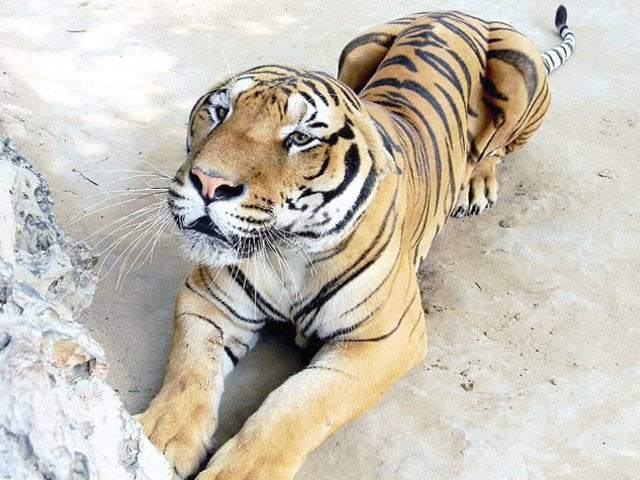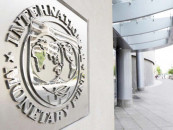Tiger count up in Punjab
Breeding farms and zoos report an increase in the number of big cats

The big-cat population in the province appears to be doing well. At different breeding farms and even at the prominent zoos, within the boundaries of Punjab, the tiger population is growing steadily.
According to details gathered by the Express Tribune, the number of tigers has witnessed an increase in zoos. “The Lahore Safari Zoo now has 39 big-cats, and the Lahore Zoo has 35,” said one official from the wildlife department.
Punjab, the officer said, is dotted with breeding farms and facilities that promote the growth of exotic animals, including tigers. “There are more than 200 breeding farms across the province,” said Mudassar Hassan, who serves as the Deputy Director at the Punjab Wildlife and Parks Department. Of these 200 farms, Hassan said, more than 20 specialise in breeding exotic tigers and other big cats. “The breeds include the African lion, common tiger, lions, and a variety of pumas,” claimed Hassan.
Tigers are the most widely recognized animals in the world and also on the verge of extinction. According to the World Wildlife Fund (WWF), a leading organization in wildlife conservation, the population of tigers is shrinking globally. On its website, the Switzerland-based organization shares a grim picture: “Just over a century ago, 100,000 wild tigers roamed across Asia. Today, fewer than 3,900 live.”
Pakistan, according to experts, does not have a significant population of these big cats. Most tigers, lions, and leopards seen at zoos, come from other parts of the world.
Private breeding
Interestingly, while Pakistan is not an exporter, private farms across Punjab seem to have a decent population of tigers. One such private breeder in Lahore wishes to export the animal. “The tiger population is growing. It is getting difficult to pay the daily bills for their diet,” claimed Mian Zia.
Zia has 14 different types of tigers, which include a variety from Africa. “Each day, I spend between Rs. 2,000 - 3,000 to feed the big cats,” said Zia. The strict regulations around exporting, he said, prevent him from selling the tigers outside Pakistan.
Over the past five years, Pakistan has imported more than 85 big cats that include pumas, tigers, lions, and leopards. Out of the total, 15, ended up as trophies for hunters. Wildlife experts blame the hunting for the dwindling numbers of tigers. According to the WWF, much of the decline in the tiger population has occurred in the past decade.
Published in The Express Tribune, July 4th, 2020.



















COMMENTS
Comments are moderated and generally will be posted if they are on-topic and not abusive.
For more information, please see our Comments FAQ